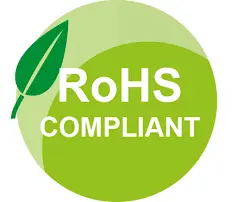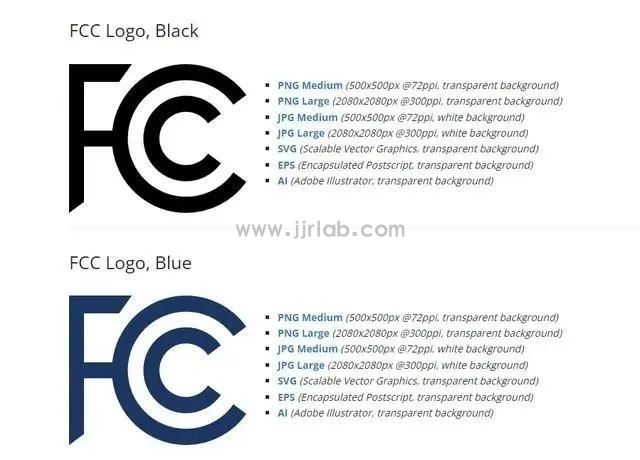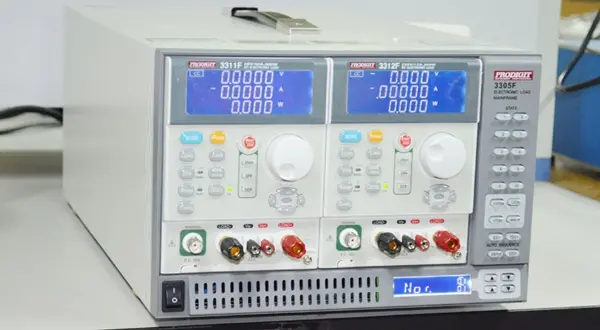
Cartoon Electronic Keyboard REACH Compliance
Cartoon electronic keyboards are important and popular toys for children. Products intended for children must undergo stricter testing before entering the market to ensure safety. Most children's toys are made of plastic, which consists of chemical substances. Therefore, such products require specific chemical testing prior to market launch.
reach regulation Overview
The REACH Regulation applies to chemical substances, preparations (e.g., coatings, adhesives), and articles (e.g., cartoon electronic keyboards) sold in the EU market. Its core focus is controlling the content and compliance of Substances of Very High Concern (SVHC) in products. As an "article," cartoon electronic keyboards must prioritize the following:
① SVHC Content: If an article contains SVHCs at a concentration >0.1% (w/w) and the annual import volume exceeds 1 ton, notification to ECHA or fulfillment of authorization obligations is required;
② Restricted Substances: Compliance with restrictions on specific substances in REACH Annex XVII (e.g., lead, cadmium, phthalates);
③ Registration Obligations: Applicable only to manufacturers/importers of chemical substances/preparations (articles themselves do not require registration, but any contained chemical substances subject to registration must comply).

reach testing Standards for Cartoon Electronic Keyboards
REACH does not have a unified "test method standard," but testing must be based on EU-recognized methods (e.g., ISO, EN, IEC standards) or ECHA guidelines. Common reference standards include:
Test Dimension | Reference Standard Examples |
SVHC Testing | ISO 17025 (laboratory competence accreditation), EN 14582 (halogen content), EPA 8270D (GC-MS analysis), ICP-OES/MS (heavy metals) |
Restricted Substances (Annex XVII) | en 71-3 (heavy metal migration in toys), IEC 62321 (hazardous substances in electrical and electronic equipment), EN 14372 (mechanical + chemical properties of children's products) |
Material Consistency | Company Bill of Materials (BOM) + Supply Chain Declaration (suppliers must provide raw material reach compliance certificates) |
Testing Items
As a toy category electrical and electronic product, cartoon electronic keyboards must cover both "article attributes" and "electrical/electronic/toy characteristics." Core testing items are as follows:
1. Substances of Very High Concern (SVHC) Testing
Testing covers all SVHCs on the REACH Candidate List (240 substances as of June 2024), with emphasis on substances commonly found in electronic keyboards:
① Heavy Metals: Lead (Pb), Cadmium (Cd), Mercury (Hg), Hexavalent Chromium (Cr(VI));
② Organic Pollutants: Polycyclic Aromatic Hydrocarbons (PAHs), Phthalates (plasticizers such as DEHP, DBP, BBP, DIBP), Short-Chain Chlorinated Paraffins (SCCPs);
③ Others: Perfluorooctanoic Acid (PFOA), Bisphenol A (BPA, if plastic components are included).
2. REACH Annex XVII Restricted Substances Testing
Compliance with restrictions applicable to electronic keyboards/toys is required, with typical items including:
① Lead and Its Compounds: Total lead ≤0.05% (toy surface coatings) or ≤0.1% (toy metal components, excluding exemptions);
② Cadmium and Its Compounds: Total cadmium ≤0.01% (toy accessible components);
③ Phthalates: DEHP+DBP+BBP ≤0.1%, DIBP ≤0.1% (all accessible plastic components);
④ Polycyclic Aromatic Hydrocarbons (PAHs): Benzo[a]pyrene ≤0.5mg/kg in rubber/plastic components; total of 16 PAHs ≤10mg/kg;
⑤ Nickel Release: For electronic keyboards with metal contact components (e.g., keys, interfaces), nickel release rate ≤0.5μg/cm²/week (for prolonged skin contact).
3. Supplementary toy safety testing (As Cartoon Electronic Keyboards Are Toys)
Must align with the EN 71 series standards (EU Toy Safety Directive):
① EN 71-1: Mechanical and Physical Properties (small parts, sharp points/edges, cord length, etc., to prevent child swallowing/scratches);
② EN 71-2: Flammability Properties (avoidance of flammable materials, e.g., plush casings);
③ EN 71-3: Migration of Certain Elements (8 heavy metals: antimony, arsenic, barium, cadmium, chromium, lead, mercury, selenium; migration levels simulated after child licking/swallowing).
4. Supplementary Electrical and Electronic Product Testing (If Electronic Components Are Included)
For electronic keyboards with circuit boards, batteries, etc., reference IEC 62321 (harmonized standard for the Restriction of Hazardous Substances in Electrical and Electronic Equipment - RoHS):
① Hexavalent Chromium (Cr(VI)): ≤0.1μg/cm² in metal components (passivated surfaces);
② Brominated Flame Retardants: Polybrominated Biphenyls (PBBs) ≤0.1%, Polybrominated Diphenyl Ethers (PBDEs) ≤0.1% (plastic casings).
IV. Process for Obtaining reach test report
Step 1: Clarify Product Scope and Compliance Obligations
① Confirm if the cartoon electronic keyboard qualifies as an "article" (yes, subject to article-specific evaluation rules);
② Sort out product material composition: List all components (e.g., plastic casing, circuit board, metal keys, battery, stickers) and materials (PP, ABS, copper alloy, silica gel, etc.);
③ Assess import volume: If annual EU imports ≤1 ton, only need to control SVHCs ≤0.1%; if >1 ton, additional notification obligations apply.
Step 2: Select a Compliant Laboratory
① Must choose a laboratory accredited to ISO 17025 with REACH testing qualifications (e.g., JJR Laboratory in China);
② Prefer laboratories with dual testing experience in "toys + electrical/electronic products" (to ensure coverage of EN 71 and IEC 62321).
Step 3: Prepare Test Samples and Documentation
· Sample Requirements: Provide representative samples (covering all materials and colors, e.g., 1-2 pieces of each color plastic casing and metal component); quantity must meet testing needs (typically 50-100g per material);
· Required Documentation: ① Product manual (including material description and age range); ② Bill of Materials (BOM): Detailed list of each component's material and supplier information; ③ Supply chain compliance declaration: Request raw material suppliers to provide REACH compliance certificates (e.g., SVHC non-exceedance statement, restricted substance compliance statement); ④ Product photos (clearly showing structure and accessible components).
Step 4: Laboratory Testing and Analysis
① The laboratory develops a test plan based on product materials and regulatory requirements (e.g., phthalate + heavy metal testing for plastic components, nickel release + lead/cadmium testing for metal components);
② Adopts EU-recognized testing methods (e.g., GC-MS for phthalates, ICP-MS for heavy metals) to ensure data accuracy;
③ If SVHCs >0.1% or restricted substance exceedances are found, assists the enterprise in rectification (e.g., raw material replacement, process adjustment).
Step 5: Issue REACH Test Report
· Report content must include: ① Laboratory information (name, ISO 17025 accreditation number); ② Product description (name, model, materials, sample quantity); ③ Test items, method standards, test results (clearly stating "compliant/non-compliant" with REACH requirements); ④ Conclusion (e.g., "All test items of this product comply with REACH Regulation and Annex XVII requirements"); ⑤ Laboratory signature and seal (must have legal effect).
Step 6: Report Review and Compliance Application
① The enterprise reviews the report for completeness (e.g., coverage of all components, comprehensiveness of test items);
② For EU customs clearance, ensure the report is within its validity period (usually 1 year; some items such as SVHCs require retesting following updates to the Candidate List);
③ If annual import volume >1 ton and SVHCs >0.1%, submit an SVHC notification via the ECHA official website (must be completed within 6 months of product market launch).
Benefits of reach certification
Products that pass REACH certification can access more markets, gain greater consumer trust, serve as a powerful product promotion tool, and maintain a competitive advantage. It has become an essential certification requirement for products entering the market in the future.
Email:hello@jjrlab.com
Write your message here and send it to us
 What Products Are Covered by Amazon TIC Audits?
What Products Are Covered by Amazon TIC Audits?
 Cartoon Electronic Keyboard REACH Compliance
Cartoon Electronic Keyboard REACH Compliance
 FCC Certification for Automatic Parking Radar Sens
FCC Certification for Automatic Parking Radar Sens
 Temu Europe Station CE-RoHS Compliance
Temu Europe Station CE-RoHS Compliance
 FCC ID Certification and SDoC Compliance
FCC ID Certification and SDoC Compliance
 Export Certification and Compliance for Lighting F
Export Certification and Compliance for Lighting F
 FCC Certification Resumes Issuance
FCC Certification Resumes Issuance
 Electrical Toy Safety Certification EN 62115 EMC T
Electrical Toy Safety Certification EN 62115 EMC T
Leave us a message
24-hour online customer service at any time to respond, so that you worry!




